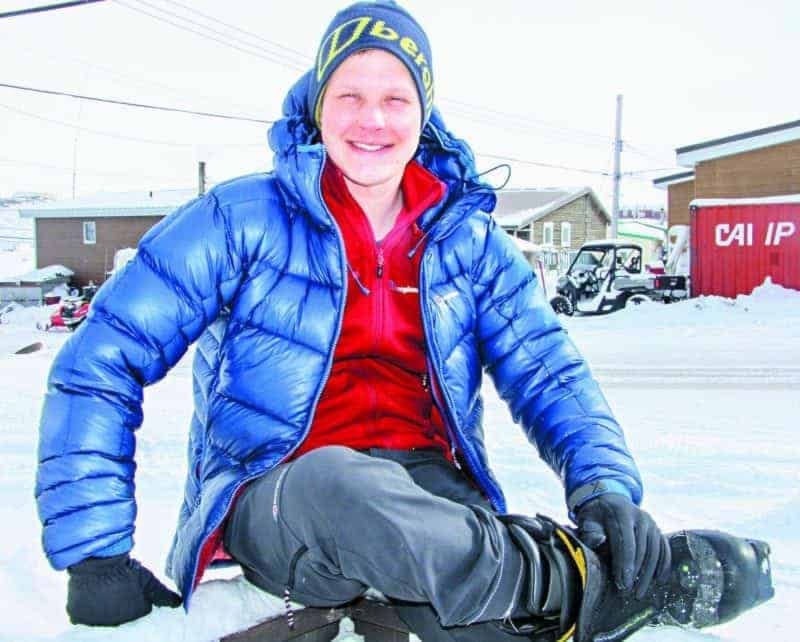A Belgian man attempting a fossil-fuel free trip from Nunavut to Argentina made stops in Chesterfield Inlet and Rankin Inlet this past week.
Arnaud Maldague, 29, of Brussels, Belgium, left Kugaaruk on Jan. 4 on a journey that will see him ski, cycle, kayak, sail, walk and even horseback ride over 30,000 kilometres until he arrives in Ushuaea, Argentina, in about two-and-a-half years.
He is undertaking this incredible challenge to promote ecological initiatives and left Rankin this past weekend on his way to Whale Cove and Churchill, Man.
Maldague said almost everyone in Kugaaruk thought he would fail on his trek to Rankin Inlet because of the cold. Some even suggested he was going to go out on the land and get lost, and they'd have to come and rescue him, he said.
“It was difficult at first because it was -40 C right from the start,” he said. “I had no adaptation time from, say, -20 C to -40 C. But when I am moving I am always warm, and you learn very quickly out there about what to do and what not to do.”
“Someday I'd like to go back to Kugaaruk, just to show them that I was able to do it.”
He has already had two bear encounters on the land, he said.
The first one had a bear following him for a while, which had him very nervous, but the second was far more dangerous as he woke up to find the animal shaking his tent and trying to drag it away.
“I have a watch system of four poles and a three-point alarm, which is two fishing lines attached to a booby trap with blank shotgun shells,” he said. “It's kind of tricky to set up and that particular day it was a little stormy and I was lazy and didn't do it, which was very stupid of me because I had seen bear tracks earlier in the day.”
“I woke some time during the night with the tent shaking and being dragged along the ice,” said Maldague. “Then he started wrecking my sledge and stuff, so I got my tent zipper open, starting screaming really loudly, and shot a flare up over him and, by the time I got out of the tent, the bear was gone.”
“You can bet I set my alarm system up every night after that.”
The Manneken Trip
He has dubbed the venture the "Manneken" trip, a Flemish word which means little guy.
“My dreams of this trip evolved while I finished my studies (in economics),” said Maldague. “I wanted to change environments and travel on snow and water (and) use the wind.”
For part of his journey Maldague will be kite-skiing, which is a mode transportation where people use kite-power to glide over snow or ice.
“I have three sails that I can use, depending on the wind range, to take advantage of the wind and travel faster,” he said.
Maldague lost his mother a few years back, but said he receives lots of moral support from his family.
He said he's been financing most of the trip out of his own pocket, but has managed to pick up a couple of sponsors along the way.
“So far I've received sponsorships for my clothing and my kite, but everything else I'm financing myself,” he said. “I'm very new to all this.”
Maldague has a Facebook page and a website so people can keep up with his journey and once he's finished, he'd like to write a book or make a documentary about his trek.
“I keep a little journal because in five months I won't remember what happened every day,” he said.
